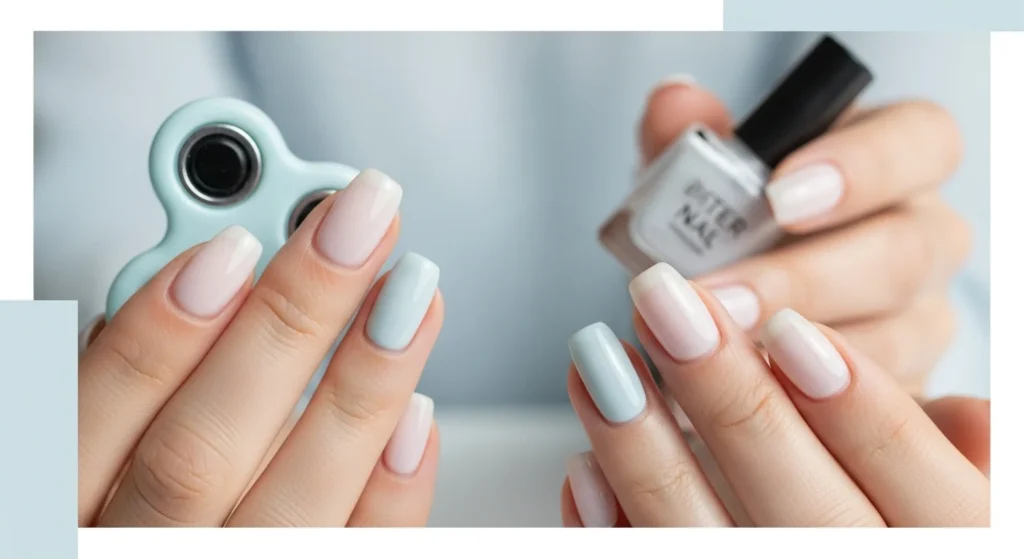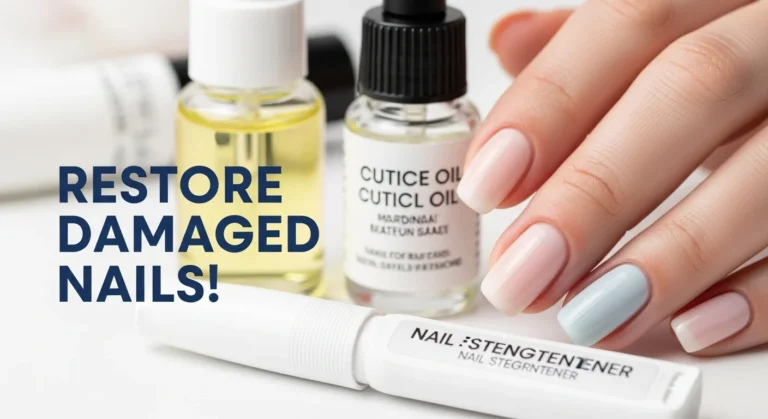Stopping Nail Biting for Good: A Practical Guide
Nail biting, or onychophagia, affects 20-30% of people and often stems from stress, anxiety, or habit. This guide provides evidence-based strategies to stop, including identifying triggers, using physical barriers like bitter polishes, practicing stress management, and maintaining nail health. It includes practical steps, tools, and FAQs to help you break the cycle effectively.
What Is Nail Biting and Why Does It Happen?
Nail biting, medically termed onychophagia, is a common behavior where individuals chew or bite their nails, often unconsciously. It can lead to damaged nails, infections, and dental issues. Research suggests 20-30% of the general population engages in nail biting, with higher prevalence in children and adolescents (American Psychiatric Association, 2013).
Prevalence of Nail Biting
20% (Lower Estimate)
30% (Upper Estimate)
Note: Prevalence is higher in children and adolescents (American Psychiatric Association, 2013).
Common Causes
- Stress or Anxiety: Nail biting often serves as a coping mechanism for emotional tension.
- Boredom or Inactivity: Idle hands may lead to unconscious biting during downtime.
- Habit Formation: Repeated behavior can become ingrained over time.
- Perfectionism: Some bite nails to “fix” uneven edges or cuticles.
How Does Nail Biting Affect You?
Nail biting isn’t just a cosmetic issue; it has tangible consequences:
- Nail Damage: Weakens nails, causing splitting or uneven growth.
- Infections: Bacteria or fungi from the mouth can enter cuts around nails, leading to paronychia (skin infections).
- Dental Problems: Chronic biting may chip teeth or misalign the jaw (Journal of Clinical Pediatric Dentistry, 2017).
- Social Impact: Damaged nails can cause embarrassment or lower confidence.
How Can You Stop Nail Biting? A Step-by-Step Guide
Breaking the nail-biting habit requires a combination of awareness, physical barriers, and behavioral changes. Follow these steps for a structured approach.

Step 1: Identify Your Triggers
Why it matters: Understanding when and why you bite helps you target the root cause.
How to do it:
- Keep a journal for 3-5 days, noting:
- When you bite (e.g., during meetings, watching TV).
- What you’re feeling (stressed, bored, anxious).
- The environment (e.g., alone, in public).
- Common triggers include stress, idle moments, or seeing uneven nails.
Step 2: Use Physical Barriers
Why it matters: Barriers make biting less appealing or harder to do.
Options:
- Bitter-Tasting Nail Polish: Products with safe, bitter compounds (e.g., denatonium benzoate) deter biting. Apply every 2-3 days.
- Bandages or Tape: Cover nails with adhesive bandages to create a physical block.
- Gloves: Wear lightweight gloves during high-risk times, like working or watching TV.
- Short Nails: Keep nails trimmed short to reduce the urge to “fix” them by biting.
Step 3: Replace the Habit
Why it matters: Swapping nail biting for a healthier behavior redirects the urge.
Suggestions:
- Fidget Tools: Use stress balls, fidget spinners, or small toys to keep hands busy.
- Chewing Alternatives: Try sugar-free gum or mints to occupy your mouth.
- Hand Activities: Knitting, doodling, or squeezing a rubber ball can distract from biting.
Step 4: Manage Stress and Anxiety
Why it matters: Since stress is a common trigger, reducing it can decrease the urge to bite.
Techniques:
- Deep Breathing: Practice 4-7-8 breathing (inhale for 4 seconds, hold for 7, exhale for 8) when stressed.
- Mindfulness: Spend 5-10 minutes daily on meditation or apps like Headspace to build awareness.
- Exercise: Regular physical activity, even a 20-minute walk, lowers stress hormones (Mayo Clinic, 2023).
Step 5: Care for Your Nails
Why it matters: Healthy, neat nails are less tempting to bite and boost confidence.
Tips:
- Moisturize cuticles daily with oils like jojoba or vitamin E to prevent dryness.
- Use a gentle file to smooth rough edges, reducing the urge to “fix” nails.
- Apply strengthening polishes with ingredients like keratin to support nail health.
- Schedule weekly nail maintenance to stay consistent.
Step 6: Track Progress and Stay Motivated
Why it matters: Monitoring success reinforces positive behavior.
How to do it:
- Set small goals, like going one week without biting.
- Take weekly photos to visually track nail growth.
- Reward yourself with non-food treats, like a new book or a movie night, for milestones.
Tools and Products to Help
The following table lists common tools to support stopping nail biting, with their purpose and usage.
| Tool/Product | Purpose | How to Use | Availability |
|---|---|---|---|
| Bitter Nail Polish | Deters biting with unpleasant taste | Apply 1-2 coats every 2-3 days | Drugstores, online |
| Adhesive Bandages | Physically blocks access to nails | Wrap around fingertips, replace daily | Pharmacies, supermarkets |
| Fidget Toys | Keeps hands occupied | Use during idle or stressful moments | Online, toy stores |
| Cuticle Oil | Maintains nail health, reduces roughness | Apply daily to cuticles, massage in | Beauty stores, online |
| Nail File | Smooths edges to prevent biting | File gently in one direction, weekly | Drugstores, supermarkets |
Additional Tips for Success
- Start Small: Focus on one or two nails at first to build confidence.
- Be Patient: Relapses happen; don’t give up if you slip.
- Involve Others: Tell a friend or family member about your goal for accountability.
- Avoid Triggers: If TV time leads to biting, keep a fidget toy nearby.
When to Seek Professional Help
If nail biting causes persistent pain, bleeding, infections, or significant distress, consult a healthcare provider. A dermatologist can assess nail damage, while a therapist can help with compulsive behaviors.
To learn more about maintaining healthy nails and preventing habits that weaken them, check out our guide on Stopping Nail Biting for Good.
FAQS
Frequently Asked Questions
How Long Does It Take to Stop Nail Biting?
It typically takes 21-66 days to break a habit, depending on the individual (European Journal of Social Psychology, 2009). Consistency with barriers and replacement behaviors speeds up progress.
Can Nail Biting Cause Serious Health Issues?
Yes, it can lead to bacterial or fungal infections around the nail bed and, in rare cases, dental damage. Regular hand washing and proper nail care reduce risks.
What If I Can’t Stop Biting on My Own?
If nail biting persists despite efforts, consider:
- Consulting a dermatologist for nail health concerns.
- Speaking with a therapist for underlying anxiety or compulsive behaviors.
- Joining support groups for habit-breaking strategies.
Are There Professional Treatments for Nail Biting?
Behavioral therapy, such as Cognitive Behavioral Therapy (CBT), can address underlying causes. Some dermatologists offer medical-grade nail strengtheners or treatments for severe cases.






